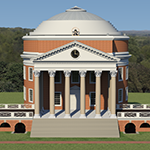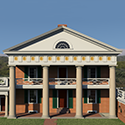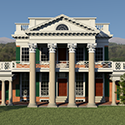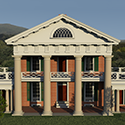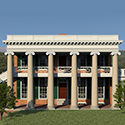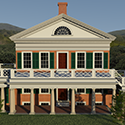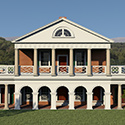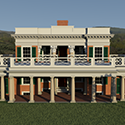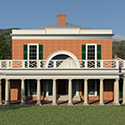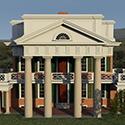Jefferson's Classical Inspirations
It was Thomas Jefferson’s wish that on his tombstone, he would be memorialized for what he considered his three highest achievements: author of the Declaration of American Independence, of the Statute of Virginia on Religious Freedom, and father of the University of Virginia. Establishing a public institution for higher education had been a dream of Jefferson’s long before the University of Virginia was chartered in 1819. The University was to be a place for southern white males to be educated in the liberal arts and shaped into future statesmen, legislators, and judges who would uphold American democracy.
In Jefferson’s mind, these democratic ideals would also have to be
reflected in the built environment of this new university, and so he
looked to Andrea Palladio’s depictions of ancient Roman classical
architecture as models for the university buildings. Not only were the
Rotunda and pavilions built to imply democratic ideals, but they were to
serve as physical teaching tools as well. In a May 1817 letter to
William Thornton, architect of the US Capitol building, Jefferson wrote,
“…what we wish is that these pavilions as they will shew [sic]
themselves above the dormitories, shall be models of taste & good
architecture, & of a variaty [sic] of appearance, no two alike, so
as to serve as specimens for the Architectural Lectures.” Through the
University, Jefferson would finally be able to achieve his dream of
elevating the architectural style of early America in the eyes of the
rest of the world. He revealed in a 1785 communication with James
Madison that his interest in the arts was to “improve the taste of my
countrymen, to increase their reputation, to reconcile them to the
respect of the world and to procure them its praise!”
Explore Jefferson’s designs and classical inspirations for the Rotunda
and ten pavilions below.

